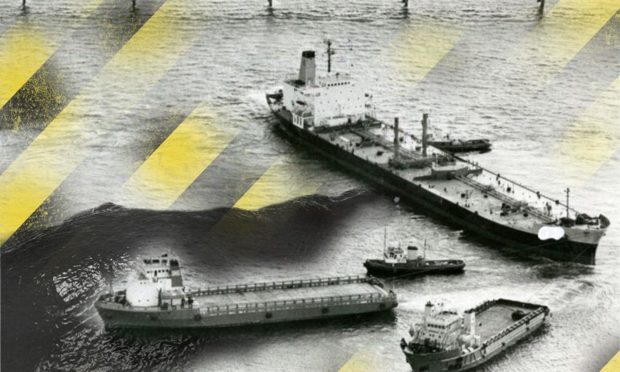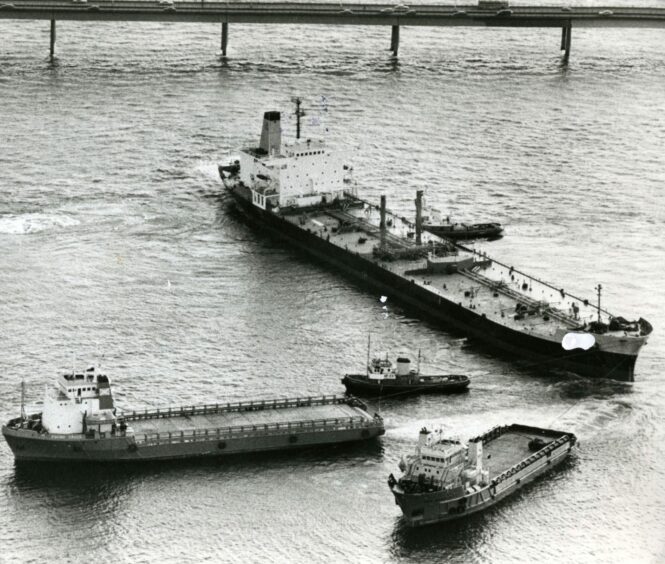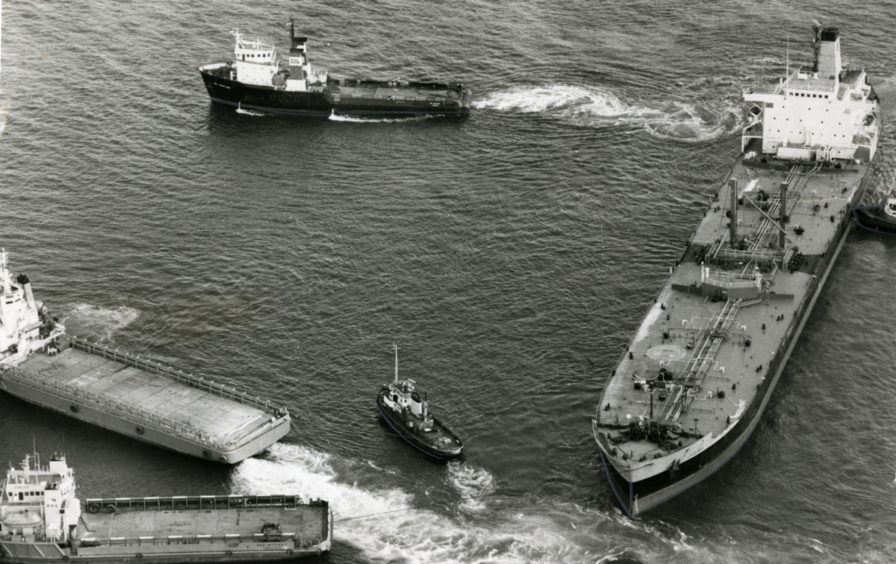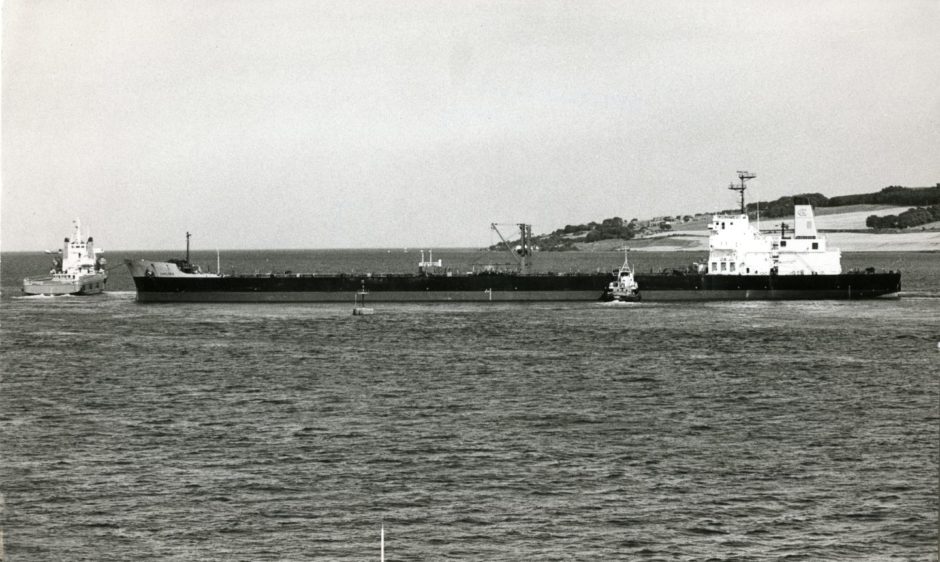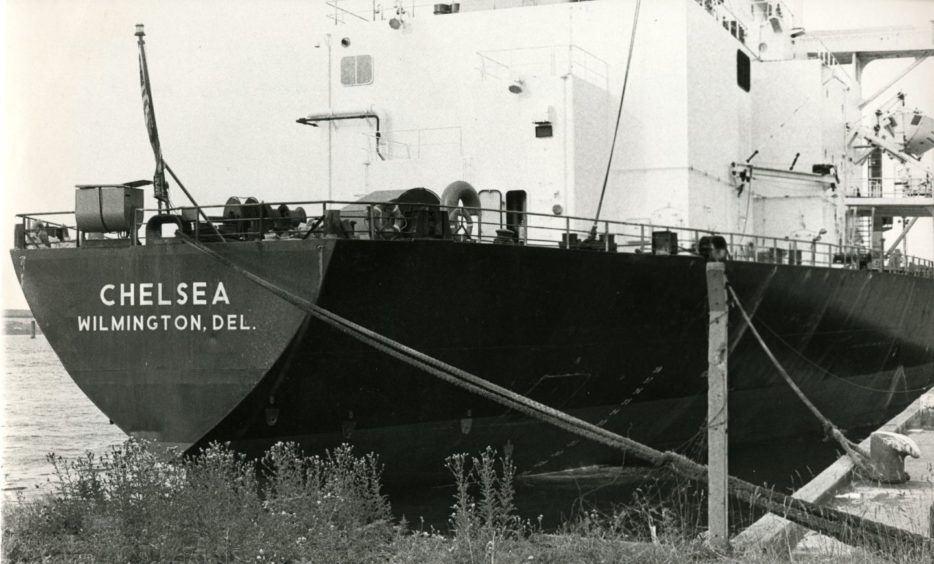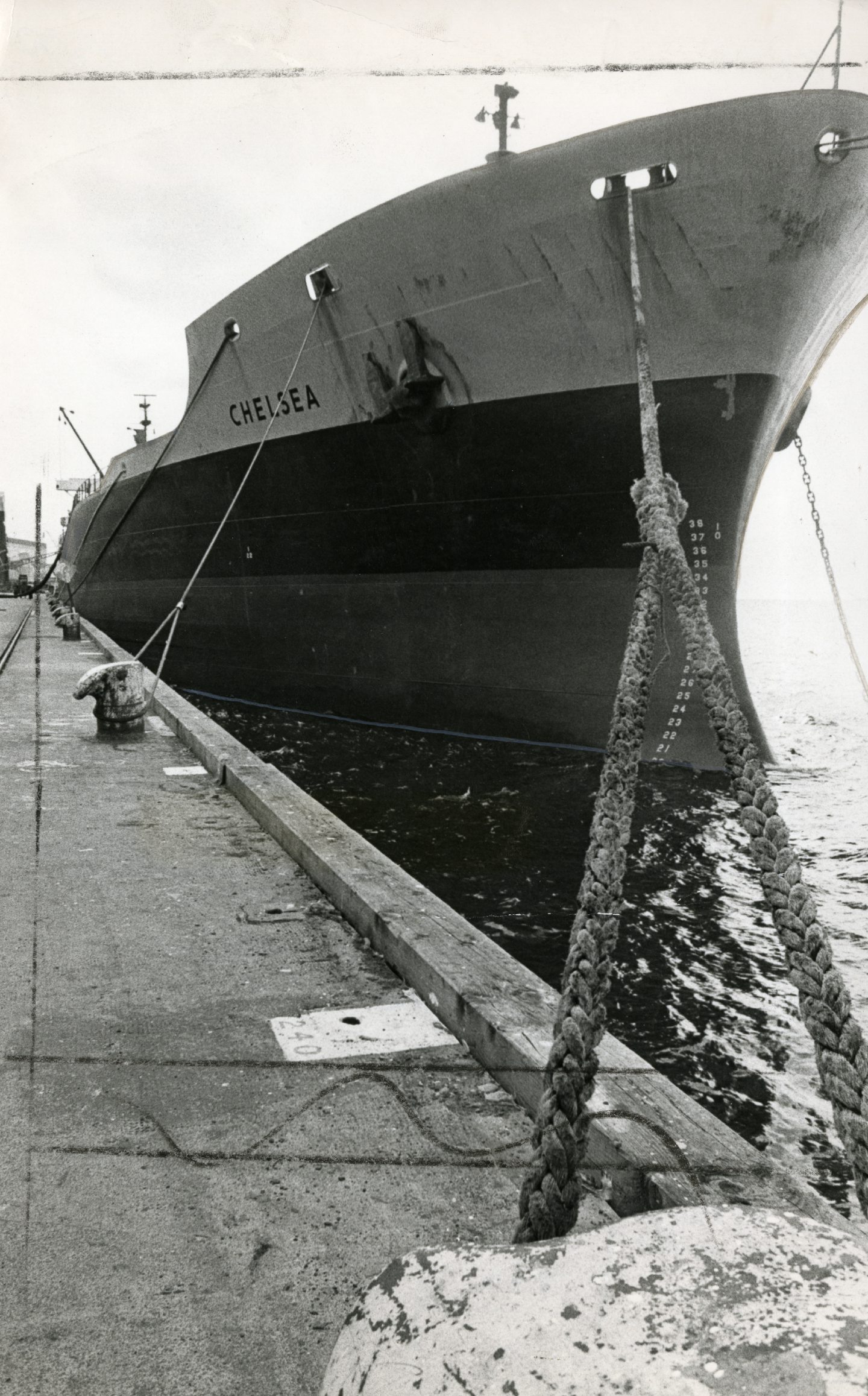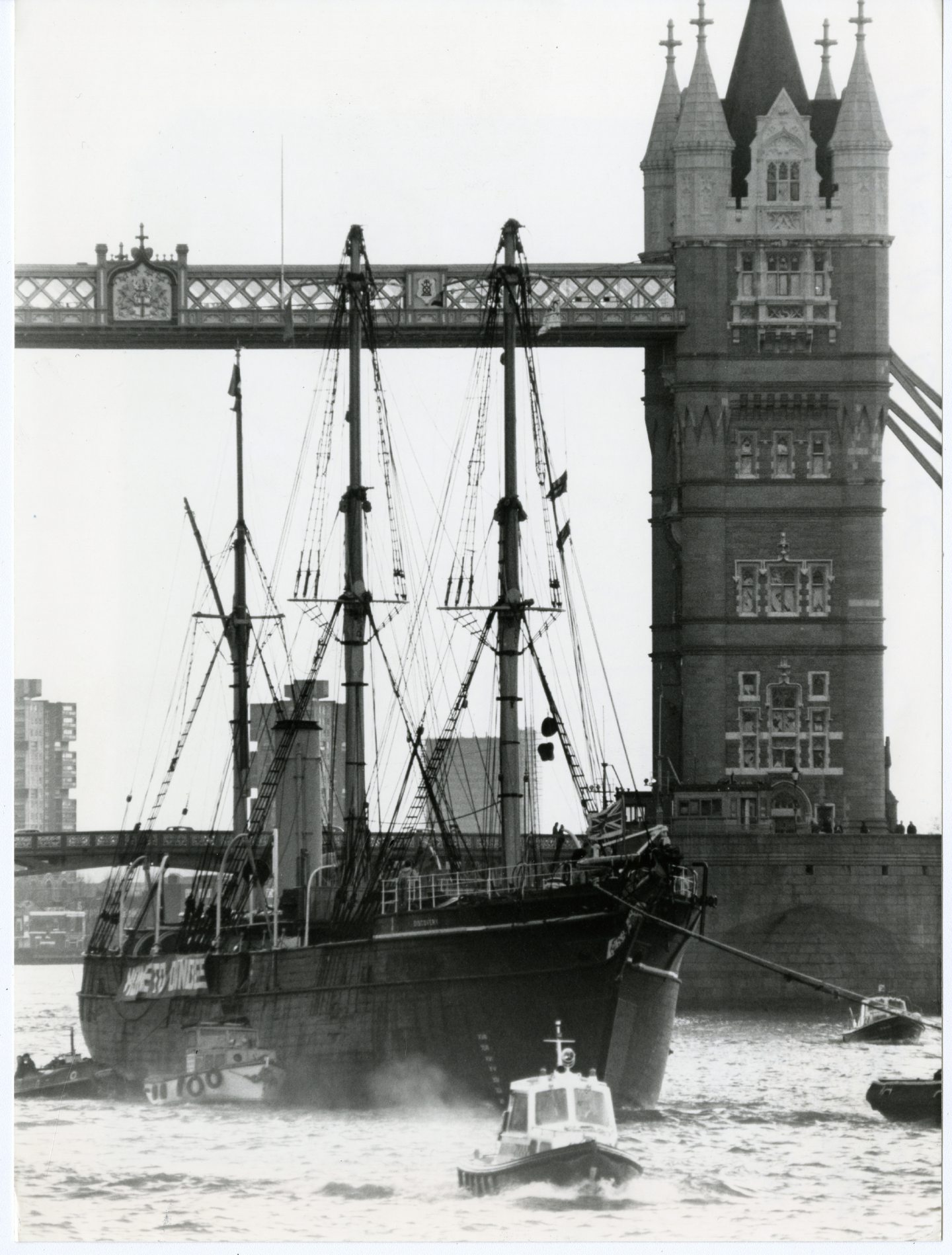Ecological disaster loomed large when a tanker carrying 29,000 tons of Venezuelan crude oil almost crashed into the Tay Road Bridge.
Harbourmaster Captain John Watson ordered the closure of the bridge as the out-of-control oil tanker Chelsea bore down on the multimillion-pound structure.
“Fortunately, I am not prone to nightmares, but it was a day I will never forget,” he said.
Its upriver drift was halted by a sandbank just over 200 yards from the bridge as the harbour tugs battled to bring the helpless vessel under control.
As the drama unfolded, thousands of people watched from the shore.
Tugs and a trio of oil vessels managed to pull the Chelsea clear before she sent 29,000 tons of crude oil pouring into the waters of the Tay.
So what happened?
The 700-foot-long Chelsea, carrying crude oil for Briggs Refinery, was being guided up the Tay by a Dundee Port Authority pilot on August 11 1983.
Because of her deep draft, her berthing was planned to take place at high water and two harbour tugs were standing by to await her arrival.
The tugs met the ship as she rounded the Newcombe buoy, when one made fast with its towline to the starboard bow while the other made fast to the port quarter.
This was part of the preparations for helping to turn the oil tanker 180 degrees to starboard so she was berthed headed out to sea again.
All went well until the American tanker with a crew of 25 failed to turn and began to drift upriver the half-mile or so towards the busy road bridge.
Captain Watson said: “The time must have been about 4.15pm as I watched her passing Prince Charles wharf to the east of the port, carried along with the last of the flood tide, and saying to myself ‘she should be starting to turn soon’, then to John Fyffe, my deputy, ‘she’s a bit late starting her turn!’
“From that moment on it became clear that the big brute of a ship had started to turn but the volume of the last of the flood tide was carrying her and her brood of tugs like a baby towards the road bridge.
“Something had gone wrong!
“Slowly the Chelsea continued to turn but her momentum towards the north bank of the river and towards the road bridge increased as more of her engine power was used to try to complete the turn.
“By then I knew that steps had to be taken to mitigate the potential risk of collision with the road bridge and ordered it to be closed with immediate effect.
“At the same time I asked John and the port control officer to contact three of the oil supply ships in port – Oil Hustler, Sound Truck and Sea Worker – to stand by to assist Chelsea when required.”
Unforeseen saviour
Police stopped traffic at both ends of the bridge.
Captain Watson requested the oil supply ships “proceed with haste” to assist the tanker, which was still in danger of slicing through the bridge.
But an unforeseen saviour was at hand when the incoming tide forced her to ground by her stern on to the sandbank on Beacon Rock.
The road bridge was reopened at 6pm but the danger was far from over.
Then Old Mother Tay smiled at me!”
Captain John Watson
The five boats now had to work together to pull the Chelsea downriver to the wharf in what was a 30-minute window to avert “unimaginable” damage.
Captain Watson said: “Old Mother Tay chose to remind us that she is in charge!
“It was the power of her flood tide, never mind arguing what may have been the other reasons, that caused the Chelsea to ground.
“Even with the three strong oil supply vessels attached, they could do nothing to free her.
“By radio, I ordered all ships and tugs to stop engines and stand by for further instructions.
“I remember waiting for the first signs of the ebb tide starting and when it did I instructed the oil ships and tugs to pull downstream with all their might.
“Then Old Mother Tay smiled at me!
“Her ebb tide started to run along the north bank of the river until it came upon the long portside hull of the Chelsea, which obstructed its passage.
“That ebb tide pushed and pushed at the side of that huge ship and helped the little ships to slowly pull her clear and berth safely shortly before 8pm.
“Without Old Mother Tay’s help the result could have been catastrophic!”
Captain Watson said the decision to close the road bridge was the right one, though the Chelsea would likely still have grounded before colliding with it.
“Even so, a risk remained at the time of the decision and had the bridge been damaged the consequence would have been disastrous,” he said.
“What has remained unknown to all who witnessed the event and the wider public, except perhaps those who have knowledge of hydro graphics, is the window of opportunity to re-float the Chelsea was less than 30 minutes.
“When the ebb tide started to run the high water depth around the ship would have remained more or less the same for the first 20 minutes or so, then its level would have decreased, leaving the ship grounded solidly on the Beacon Rock bank and no towing would have moved her.
“The consequence of that is unthinkable!”
What might have happened?
Captain Watson said: “When she dried out would she have broken her back and sent 29,000 tons of Venezuelan crude oil pouring into the waters of the Tay to pollute everything in the ebb tide’s path on both banks of the Tay out to the North Sea?
“Then on its return on both banks of the Tay on the flood tide all the way to Perth and beyond.
“The spill along with that of the fuel oil on board would have taken years to recover and the damage (is) unimaginable.
“Then what about the wreck?
“How long would that have remained?”
Professor Rob Duck, emeritus professor of environmental geoscience at Dundee University, said there is “no doubt” that ecological disaster was looming.
“Had the vessel hit the bridge, I’ve no idea how long it might have taken for oil to escape and how long it might take for the tanks to empty,” he said.
“But if you look at the damage caused by the leakage of just 87 tons of Venezuelan crude oil from a split in the hull of the Tank Duchess in 1968, which took place whilst the vessel was moored between the road bridge and Tayport, and over 1,300 birds were killed along with associated beach pollution on both sides of the Tay, and then upscale things, potentially to a maximum of 29k tons, then the consequences could have been catastrophic.
“Whether all of the oil would have escaped is doubtful but even if a fraction had then it would have been carried and distributed upstream on the flood and downstream on the ebb by the Tay’s rapid tidal currents.
“The consequences are unthinkable.
“The loss of all wading birds in the Tay potentially and a virtual wipe-out of many aquatic species and I doubt if the ‘authorities’ could have coped with such a spill.
“And, if it had struck the bridge, the structure could have been severely damaged, causing potentially a lengthy closure for repairs.
“The return of the Discovery to Dundee could certainly have been delayed or perhaps might not have happened at all if the Tay was still in a clean-up phase, and if it was it would have been a massive, protracted and hugely costly process.
“Did the Tay, in effect, come to its own rescue that evening?
“It would be nice to think so.”
More like this:
SS Uganda: Epic rescue mission to save cruise ship which got stuck in the River Tay
The ambitious crossing plan from Dundee to Fife – under the sea
